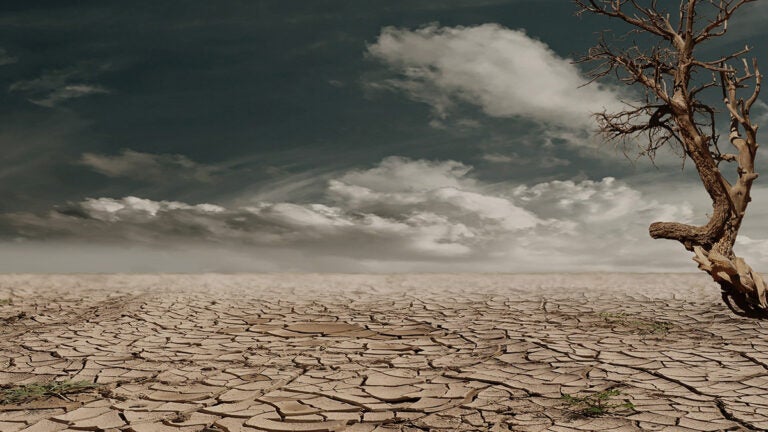
Predicting drought in the American West just got much more difficult
People hoping to get a handle on future droughts in the American West are in for a disappointment, as new research spanning centuries shows El Niño cycles are an unreliable predictor.
A study led by scientists at USC Dornsife College of Letters, Arts and Sciences found that Earth’s dynamic atmosphere is a wild card that plays a much bigger role than sea surface temperatures, yet defies predictability, in the wet and dry cycles that whipsaw the western states. The study was published Aug. 7 in Science Advances.
The findings are significant for water management, agriculture, urban planning and natural resources protection.
“The main finding is not terribly hopeful for short-term drought prediction,” said Julien Emile-Geay, a study author and associate professor of Earth sciences at USC Dornsife. “We found that, historically speaking, year-to-year droughts in the western United States were less predictable than previous studies have claimed.”
1,000 years of droughts in the West and beyond
Emile-Geay and postdoctoral scholar Michael Erb, who is now at Northern Arizona University, joined with other scientists at the University of Washington and Columbia University to produce the study.
The researchers set out to answer the question: What determines droughts in the West?
They examined North American droughts and global conditions spanning more than 1,000 years.
The prevailing explanation is that the El Niño-Southern Oscillation plays a key role in these drought episodes. El Niño conditions occur when sea temperatures in the eastern equatorial Pacific Ocean are warmer than normal and are associated with wet years in the American Southwest; La Niña conditions occur when water is cooler than normal and are associated with dry years in the Southwest.
But the scientists found that rule of thumb didn’t jibe well with all drought cycles of the past.
“La Niña proved to not be the only game in town,” Emile-Geay said.
A notable example of this phenomenon occurred in 2015–16, an El Niño year when Southern California did not receive the increased precipitation that was predicted. Instead, the relief came unexpectedly the following year, a La Niña year that should have been drier than normal.
What other variables can lead to drought?
The scientists found droughts can originate in the atmosphere.
“The atmosphere creates a lot of variations in moisture supply on its own, and it can cook up droughts all by itself, without being told what to do by the ocean,” Emile-Geay said.
Research says carbon emissions will continue to trap heat and warm the surface, and the West will experience increasingly dry conditions as a result.
“Our study suggests that the atmosphere will continue to add a strongly unpredictable element to moisture conditions in the southwestern United States, on top of drying induced by global warming,” Emile-Geay said. “That is, the Southwest is headed for a drier future overall but with the atmosphere adding a wildcard that may, at times, make things better or worse for the people and ecosystems that depend on that water.”
See USC News for more on the story >>
About the study
In addition to Emile-Geay and Erb, study authors include Gregory Hakim and Eric Steig at the University of Washington and Nathan Steiger at Columbia University.
This work was supported by the NOAA (grants NA14OAR4310175 and NA14OAR4310176), the National Science Foundation (grants NSF AGS-1702423 and NSF AGS-1805490), and by USC and NAU.